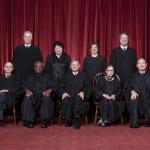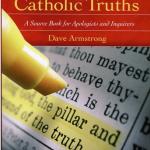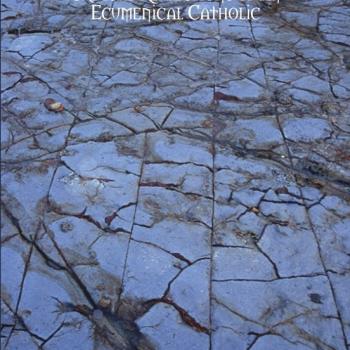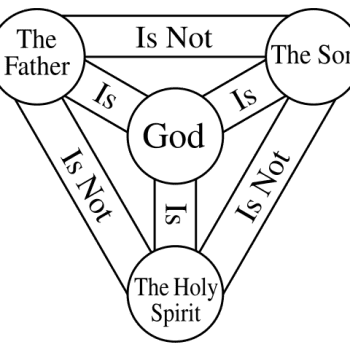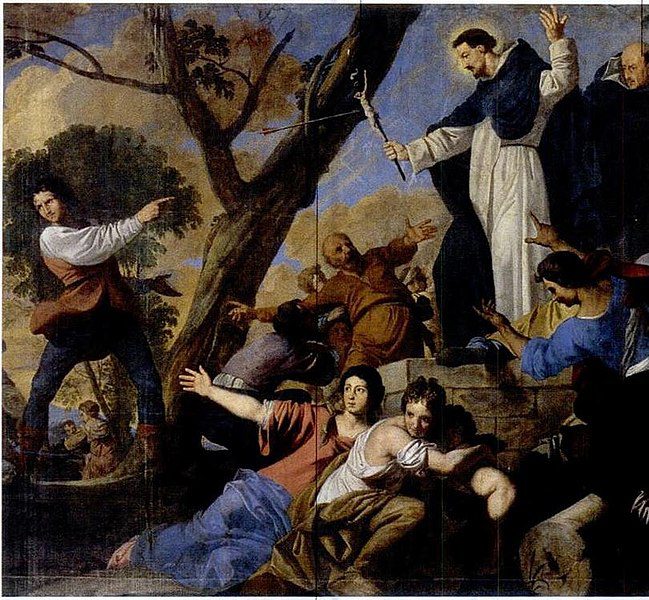
Some strains of Protestant thought — most notably the “Landmark” Baptists — seek to find a non-Catholic “apostolic succession” all throughout Church history up to the 16th century. In the desperate attempt to claim spiritual and theological predecessors, all sorts of heretical groups are espoused, including the Montanists, Novationists, Donatists, Docetists, Cathari, Albigensians, Waldenses, Hussites, and Wycliffites. The trouble is that none of these groups fit very well into a Protestant schema. They are either radically non-Christian, even Gnostic (e.g., the Albigensians), or far too Catholic in what they retain (Waldenses, Hussites) to qualify as “proto-Protestant.”
Yet that doesn’t stop certain Protestants (especially of the anti-Catholic variety) from latching onto these groups for polemical purposes. “My enemy’s enemy is my ally.” These claims are only as good as the real knowledge of such groups is scanty and incomplete. The most striking and demonstrably absurd example of this historical revisionism is the adoption of the Albigensians (a sub-group or variant of Catharism, which flourished particularly in the south of France).
1) From the Catholic Encyclopedia (1913), “Albigenses”:
A neo-Manichæan sect that flourished in southern France in the twelfth and thirteenth centuries . . . They were also called Catharists (katharos, pure), though in reality they were only a branch of the Catharistic movement . . .
I. PRINCIPLES
(a) Doctrinal
The Albigenses asserted the co-existence of two mutually opposed principles, one good, the other evil. The former is the creator of the spiritual, the latter of the material world. The bad principle is the source of all evil; natural phenomena, either ordinary like the growth of plants, or extraordinary as earthquakes, likewise moral disorders (war), must be attributed to him. He created the human body and is the author of sin, which springs from matter and not from the spirit. The Old Testament must be either partly or entirely ascribed to him; whereas the New Testament is the revelation of the beneficent God. The latter is the creator of human souls, which the bad principle imprisoned in material bodies after he had deceived them into leaving the kingdom of light. This earth is a place of punishment, the only hell that exists for the human soul. Punishment, however, is not everlasting; for all souls, being Divine in nature, must eventually be liberated. To accomplish this deliverance God sent upon earth Jesus Christ, who, although very perfect, like the Holy Ghost, is still a mere creature. The Redeemer could not take on a genuine human body, because he would thereby have come under the control of the evil principle. His body was, therefore, of celestial essence, and with it He penetrated the ear of Mary. It was only apparently that He was born from her and only apparently that He suffered. His redemption was not operative, but solely instructive. To enjoy its benefits, one must become a member of the Church of Christ (the Albigenses). Here below, it is not the Catholic sacraments but the peculiar ceremony of the Albigenses known as the consolamentum, or “consolation,” that purifies the soul from all sin and ensures its immediate return to heaven. The resurrection of the body will not take place, since by its nature all flesh is evil.
(b) Moral
The dualism of the Albigenses was also the basis of their moral teaching. Man, they taught, is a living contradiction. Hence, the liberation of the soul from its captivity in the body is the true end of our being. To attain this, suicide is commendable; it was customary among them in the form of the endura (starvation). The extinction of bodily life on the largest scale consistent with human existence is also a perfect aim. As generation propagates the slavery of the soul to the body, perpetual chastity should be practiced. Matrimonial intercourse is unlawful; concubinage, being of a less permanent nature, is preferable to marriage. Abandonment of his wife by the husband, or vice versa, is desirable. Generation was abhorred by the Albigenses even in the animal kingdom. Consequently, abstention from all animal food, except fish, was enjoined. Their belief in metempsychosis, or the transmigration of souls, the result of their logical rejection of purgatory, furnishes another explanation for the same abstinence. To this practice they added long and rigorous fasts. The necessity of absolute fidelity to the sect was strongly inculcated. War and capital punishment were absolutely condemned . . .
Properly speaking, Albigensianism was not a Christian heresy but an extra-Christian religion . . . What the Church combated was principles that led directly not only to the ruin of Christianity, but to the very extinction of the human race.
N.A. WEBER Transcribed by Tim Drake
2) From The Oxford Dictionary of the Christian Church [Anglican] (2nd edition, edited by F. L. Cross & E. A. Livingstone, Oxford University Press, 1983, “Albigenses,” 31):
Their doctrine in its purest form was strongly dualist, akin to the Manichaean beliefs, and they rejected the flesh and material creation as evil . . . [they taught that] Christ was an angel with a phantom body who, consequently, did not suffer or rise again, and whose redemptive work consisted only in teaching man the true (i.e., Albigensian) doctrine.
Rejecting the sacraments, the doctrines of hell, purgatory, and the resurrection of the body, and believing that all matter was bad, their moral doctrine was of extreme rigorism, condemning marriage, the use of meat, milk, eggs, and other animal produce . . .
3) From The Age of Faith, Will Durant [secularist] (New York: Simon and Schuster, 1950, 771-772):
The doctrines and practices of the Cathari were in part a return to primitive Christian beliefs and ways, partly a vague memory of the Arian heresy . . . , partly a product of Manichean and other Oriental ideas . . .
The theology of the Cathari divided the cosmos Manicheanly into Good, God, Spirit, Heaven; and Evil, Satan, Matter, the material universe. Satan, not God, created the visible world. All matter was accounted evil, including the cross on which Christ died . . . All flesh was matter, and all contact with it was impurity; all sexual congress was sinful; the sin of Adam and Eve was coitus. Opponents describe the Albigenses as rejecting the sacraments, the Mass, the veneration of images, the Trinity, and the Virgin Birth; Christ was an angel, but not one with God . . .
There was no hell or purgatory in this theology; every soul would be saved, if only after many purifying transmigrations. To attain heaven one had to die in a state of purity; for this it was necessary to receive from a Catharist priest the consolamentum, a last sacrament which completely cleansed the soul of sin.
4) From Jaroslav Pelikan [Lutheran], The Growth of Medieval Theology (600-1300) (University of Chicago Press, 1978, 238-241):
The doctrine of the Cathari went far deeper in its divergence from catholic orthodoxy than even the most radical of attacks on the church and its structures, penetrating to the very center of Christian monotheism, including the doctrines of the trinity and the person of Christ . . .
The Cathari stood in a succession, episcopal as well as doctrinal, with the Bogomils of Bulgaria, and through them – whatever the historical connection may have been – with the ancient Manichean heresy . . .
Both the confessional literature of the Cathari themselves and the writings of catholics against them identified the dualistic view of God as their primary tenet . . .
. . . the Trinity, which was obviously jeopardized by the assertion that there were two gods, but also the person of Christ. If the good God could not be the Creator of a visible world in which sin and evil took place, it had to follow that the human nature of Christ could not partake of such a world . . . Some of the Cathari apparently extricated themselves from this difficulty by resorting to the ancient docetic heresy that the humanity of Christ was only an illusion . . .
It was likewise a corollary of the dualism of the Cathari that the traditional Christian doctrine of the resurrection of the body was unacceptable . . .
The contrast between the morality of the Old Testament and that of the New was due to the origin of the former in the evil god . . . ‘the patriarchs . . . and all those who died before the passion [of Christ] were damned.’ . . . John the Baptist came in for special condemnation from some of the Cathari as ‘the one who had been sent by the devil to impede the way of Christ’ and who had been damned.
5) From Kenneth Scott Latourette [Baptist]: A History of Christianity: Vol. 1: Beginnings to 1500 (New York: Harper & Row, 1953, 454-455):
The Cathari were dualists, believing that there are two eternal powers, the one good and the other evil, that the visible world is the creation of the evil power, and that the spiritual world is the work of the good power . . .
Some put forth a variant of this dualism, saying that the good God had two sons, one of whom, Satan, rebelled, and the other, Christ, became the redeemer . . .
They held that since flesh is evil, Christ could not have had a real body or have died a real death . . .
***
(originally 6-7-98)
Photo credit: St Dominic accompanied by Simon de Montfort raising the crucifix against the Albigensians, by Daniel van den Dyck (1610-1670) [public domain / Wikimedia Commons]
***


